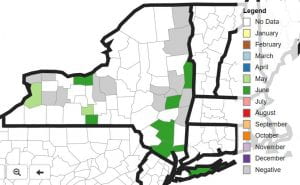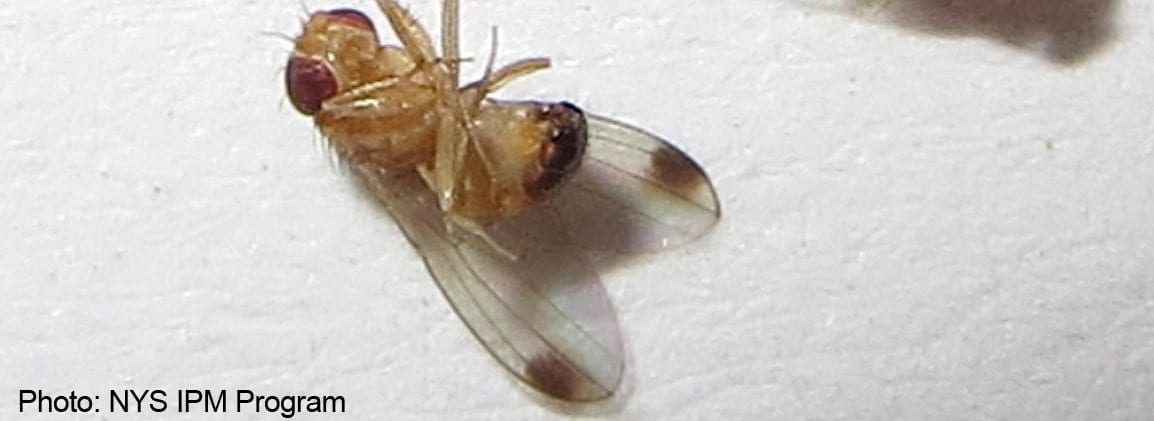
Four female SWD were caught in two traps set on the edge of a blueberry planting in Washington County. Traps were checked on June 17, 2019 by Laura McDermott, berry and vegetable specialist on the CCE Eastern NY Commercial Horticulture Program.
Fruit in the planting is sizing up beautifully, but is still hard and green — unsusceptible to SWD oviposition.
While I promised to pull together management guidelines for SWD this week, the pace of field work in my program has prevented this effort. However, the quick reference guides to insecticides for SWD were updated this week. Refer to them on the SWD Management page or in the links below:
Quick reference guides for 2019:
Laura McDermott and I will be pulling together a comprehensive perspective on this year's SWD management, given it's early arrival. In the meantime, for blueberry and bramble growers we now have the IPM Guides from the NE IPM Center SWD Working Group. There's lots of information relevant to other crops in these guides.
Spotted Wing Drosophila IPM in Raspberries & Blackberries
neipmc.org/go/swdpub1
Spotted Wing Drosophila IPM in Blueberries
neipmc.org/go/swdpub2

For those farms growing June strawberries, which are approaching harvest or where harvest is underway, this crop will be at risk this year. Spillover of SWD from June strawberries to other crops may occur following renovation of this crop. Cull fruit left in the field will provide a resource for SWD — food and reproduction.
It is relatively easy to use red or yellow sticky cards to monitor for male SWD in strawberry plantings or other fruit plantings. Set the sticky card traps on the edge of the planting where it is convenient to read them daily for males, which are easy to identify. Here’s one place you can order trap and lure supplies – Great Lakes IPM, www.greatlakesipm.com/.

